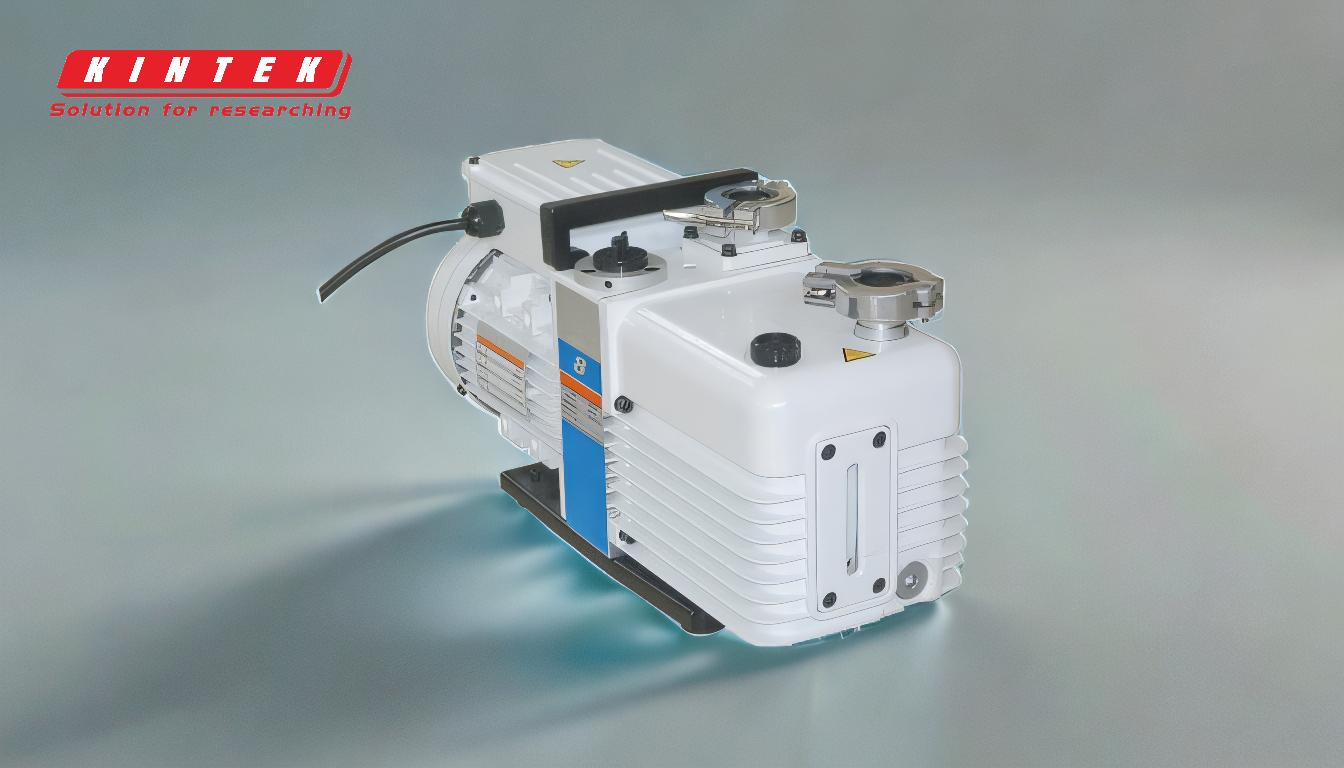A vacuum pump, particularly a lab vacuum pump, is designed to remove air and other gases from a sealed volume to create a vacuum. It works by mechanically reducing the pressure inside a chamber, which forces air molecules out, thereby lowering the air density. This process is essential in various scientific, industrial, and laboratory applications where a controlled vacuum environment is required. The efficiency and effectiveness of a vacuum pump depend on its type, design, and operational parameters. Understanding how a vacuum pump works and its limitations is crucial for selecting the right equipment for specific applications.
Key Points Explained:

-
How a Vacuum Pump Works:
- A vacuum pump operates by creating a pressure difference between the inside of a sealed chamber and the external environment. It uses mechanical or chemical methods to remove air and gas molecules, reducing the pressure inside the chamber.
- Common types of vacuum pumps include rotary vane pumps, diaphragm pumps, and turbo pumps, each suited for different levels of vacuum and applications.
-
Types of Vacuum Pumps:
- Rotary Vane Pumps: These are commonly used in laboratories and industrial settings. They use rotating vanes to trap and expel air, creating a low to medium vacuum.
- Diaphragm Pumps: These pumps use a flexible diaphragm to create a vacuum and are ideal for applications requiring a clean, oil-free environment.
- Turbo Pumps: These are high-speed pumps used for achieving high vacuums, often in scientific research and semiconductor manufacturing.
-
Applications of Vacuum Pumps:
- Laboratory Use: Vacuum pumps are essential in laboratories for processes like filtration, distillation, and degassing. They help in creating controlled environments for experiments.
- Industrial Use: In industries, vacuum pumps are used in packaging, material handling, and manufacturing processes where air removal is necessary.
- Medical Use: Vacuum pumps are used in medical devices like suction pumps and vacuum-assisted wound closure systems.
-
Limitations and Considerations:
- Pump Capacity: The capacity of a vacuum pump determines how much air it can remove and the level of vacuum it can achieve. It's important to choose a pump with the right capacity for your application.
- Maintenance: Regular maintenance is crucial to ensure the longevity and efficiency of a vacuum pump. This includes checking for wear and tear, replacing seals, and ensuring proper lubrication.
- Environmental Factors: The operating environment can affect the performance of a vacuum pump. Factors like temperature, humidity, and the presence of corrosive gases should be considered.
-
Selecting the Right Vacuum Pump:
- Application Requirements: Determine the level of vacuum required, the volume of air to be removed, and the type of gases involved.
- Pump Type: Choose a pump type that matches your application needs, whether it's for a laboratory, industrial, or medical setting.
- Budget and Maintenance: Consider the initial cost, operational costs, and maintenance requirements when selecting a vacuum pump.
In conclusion, a vacuum pump, especially a lab vacuum pump, is a versatile and essential tool for removing air and creating a vacuum in various applications. Understanding its working principles, types, and limitations is crucial for selecting the right pump for your needs. Whether in a laboratory, industrial, or medical setting, the right vacuum pump can significantly enhance the efficiency and success of your processes.
Summary Table:
| Aspect | Details |
|---|---|
| How It Works | Creates a pressure difference to remove air and gases, lowering air density. |
| Types | Rotary vane, diaphragm, and turbo pumps for different vacuum levels. |
| Applications | Labs (filtration, distillation), industries (packaging), and medical uses. |
| Limitations | Pump capacity, maintenance needs, and environmental factors. |
| Selection Factors | Application requirements, pump type, budget, and maintenance. |
Need help choosing the right vacuum pump for your needs? Contact our experts today!









